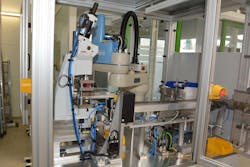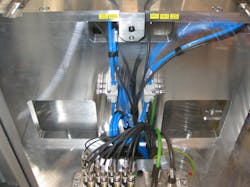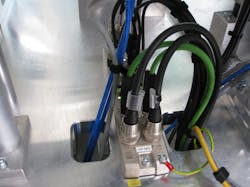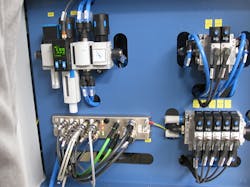Industry 4.0 strives to eliminate the rigid structure of production facilities and products and replace it with flexible network environments. At the heart of this phenomenon is the Industrial Internet of Things (IIoT), which extensively networks humans, machines, and other elements together to lay the foundation for new industrial services and offerings that the world has never thought about before.
Now, engineers can achieve full flexibility in production and create a batch size of one. This means they can quickly create highly configured and tailored products that meet the very specific and unique demands of their customers. The IIoT drives us toward an exciting revolution where we can break established rules and open up endless manufacturing and production possibilities.
With this new framework comes the need for intelligent systems and enhanced machine-to-machine communication. Intelligent systems are critical for helping engineers overcome space constraints in production and improve efficiency. These systems allow engineers to run multiple steps at once, which reduce operation costs and enables them to get more done quickly. In order for these intelligent processes to operate smoothly, a solid and sound communications infrastructure must support it.
Intelligent Systems: Robotics Cells
A robot system is a programmable machine comprised of a manipulator (or robot arm), a controller, and an effector that includes tools and grippers. Robots are also often equipped with various sensors which require I/O modules, including fieldbus and sensor connections. Once programmed, the robot can perform an operation autonomously. But in order to do this successfully, the robot system needs a communications network that includes the following:
- A programmable logic controller (PLC), which supervises and programs the network, in addition to commanding actions.
- Drives that move various parts of the network, including engines, transmissions, and regulators.
- Sensors or actuators that provide information on the status within a cell and automatically recognize environmental changes.
- Gripping or transport systems, which connect the workplace and robot itself.
Robotics cells, though relatively simple in structure, carry out very specialized and complex operations and automate routine processes. One sector that particularly benefits from this type of intelligent system is the textile manufacturing industry.
A Machine-Building Case Study
A German textile machinery manufacturer of assembly parts for knitting machines wanted to improve the efficiency, flexibility, and quality of its production. The company needed to create a robot cell to test guide plates for the appropriate thickness levels of the yarn, as well as to sort out the boards that did not meet the ideal physical and quality requirements.
To do this—and ensure the utmost level of precision and accuracy—the robot system needed to move around the production floor, while maintaining full availability without modifications to the network. This flexibility allows the network to be automatically reprogrammed without the manufacturer having to do it manually each time, which requires specific programming knowledge and training.
To operate successfully, the robot system needs a flexible, efficient communications network with the following specifications:
- Quick and reliable signal transmission via PROFINET, even in the face of extreme dust, vibrations, and short circuiting. PROFINTET was selected for its optimal performance in Siemens environments and provides additional functions for the transmission of diagnostics, parameterization, and alarms.
- Zinc die-cast housing that fully encapsulates the robot cell.
- Compliance with IP67 protection class requirements for water resistance, with the ability to work for at least 30 minutes while under 15cm to 1m of water.
- Withstand a temperature range of −10° C to +60° C with a maximum current carrying capacity of 9 A per module.
- LED status and diagnostic indicators, including detailed diagnostics information for each I/O channel via a standard web browser. A web server integrated into the module should enable this functionality.
- Standardized actuator and sensor connecting cables equipped with ready-to-use connectors, along with 7/8-in. power supply lines and matching data cables; these cables should be molded on both sides.
- Modules includes galvanic isolation, meaning unwanted current is prohibited from flowing between two units sharing a ground connector.
By enabling fast and reliable signal transmission, and reducing the amount of wiring needed for a particular application, the robot system reduces the costs and time of production and checks circuit breakers for high levels of efficiency. This also gives engineers flexibility in deciding how to use any combination of input and output channels, which is especially important in the machine building sector where space constraints are a major concern.
Intelligent and flexible manufacturing concepts, like this robot cell, make it easier for engineers to fix operation and production problems and adapt to fast-changing operating conditions. This in turn enables companies to infuse creative solutions into their production processes and outperform the competition.
About the Author
Toni Hauert
Business Development Manager
Toni Hauert is a business development manager at Belden’s ICOS division and is responsible for the strategic direction of I/O network systems. Hauert graduated from the Flensburg University of Applied Sciences with a major in business administration. Before joining Belden in 2013, he worked as a sales manager at wenglor sensoric GmbH for eight years.






